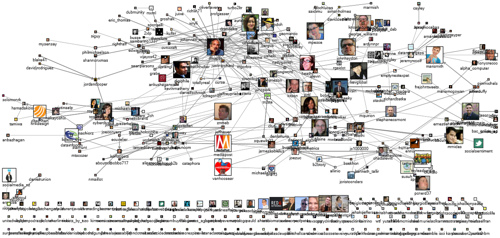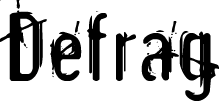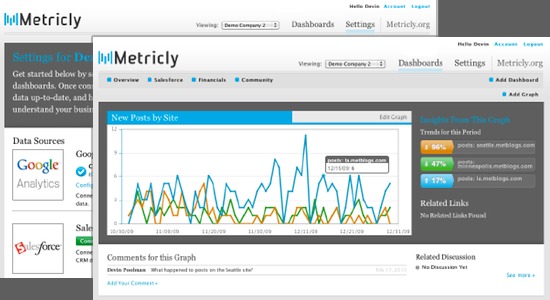 Social network analysis has been a part of social media analysis (not the same thing) for a long time, but it hasn't been central to the social media discussion lately. Mostly, SNA shows up in the form of link analysis, which is used to identify online communities and influencers. A recent conversation on intelligence applications of social media data got me thinking about how much more could be done with the many expressions of connections online.
Social network analysis has been a part of social media analysis (not the same thing) for a long time, but it hasn't been central to the social media discussion lately. Mostly, SNA shows up in the form of link analysis, which is used to identify online communities and influencers. A recent conversation on intelligence applications of social media data got me thinking about how much more could be done with the many expressions of connections online.
Looking for less obvious connections
Link analysis is relatively easy work, since the data you're looking for is helpfully encoded in HTML. Follow the link, map the connection, and continue. But think about all of the other connection data that is being generated, and how it could be used to map social networks or model influence in the real world:
- Explicit social graph data
Sometimes we make it easy, by making our connections on sites like Facebook and LinkedIn visible to the world. - Follower/following
Twitter follow connections are probably weaker than other social network connections, but these connections are mostly public. Asymmetrical follow tells you something different about the relationship. - @replies
Probably weaker than a social network connection, but stronger than a follow. @replies indicate some level of active connection (which may be one-way). - References in text
A mention of an article or book may not include a link that a crawler could follow, but it's still a citation. - Mentions in text
References to people, organizations, and topics within the text of a post. The text might even describe the nature of the connection (e.g., "my friend Bob," "Bob, my former boss"). - Sharing
Bookmarks, likes, and other sharing services provide another source of links from identifiable parties. - Book reviews
What do you read? Which authors? Who comments on your reviews? Are your reviews voted up or down? - Community membership
Besides direct connections with individuals, we're joining discussion forums and online communities, which connect us to other members. - Forum posts
Active engagement in a community is a signal. Comments on a common thread suggest a connection, or at least common interests. - Blog comments
Commenting on a blog indicates that you read it (unless you're a spambot). - Check-ins
Check-ins reveal where people go. Who else checks in at the same place? At the same time? What about accidental check-ins?
Each of these sources is connected to an entity—a user account that belongs to a person or an organization. If you can identify the same entity across multiple services, then you can build a more complete picture of that entity's connections. The differences between types of connections might lead to a deeper analysis of the network, too.
As social becomes a feature of seemingly everything online, the potential to use SNA to build richer analysis only grows. Social media are giving us many opportunities in indicate our connections, both explicitly and implicitly, constantly adding to the public data pool. Whether this is more of an opportunity for analysis or a threat to privacy depends on your point of view.
Image by Marc Smith.
This is one of those posts where the probability that you'll comment is inversely proportional to the probability that this idea is useful to your work.
 Do you have your calendar handy? What are you doing November 17th and 18th? If you're serious about the topics we discuss here—social media, analytics, intelligence, and everything else that matters—you should be in Broomfield, Colorado for
Do you have your calendar handy? What are you doing November 17th and 18th? If you're serious about the topics we discuss here—social media, analytics, intelligence, and everything else that matters—you should be in Broomfield, Colorado for  Too much information. And increasingly, too many disparate sources of data, many with their own analytical tools. So it's interesting to see a new crop of startups offering tools that pull analytics data from multiple sources into a single dashboard for analysis and reporting.
Too much information. And increasingly, too many disparate sources of data, many with their own analytical tools. So it's interesting to see a new crop of startups offering tools that pull analytics data from multiple sources into a single dashboard for analysis and reporting.